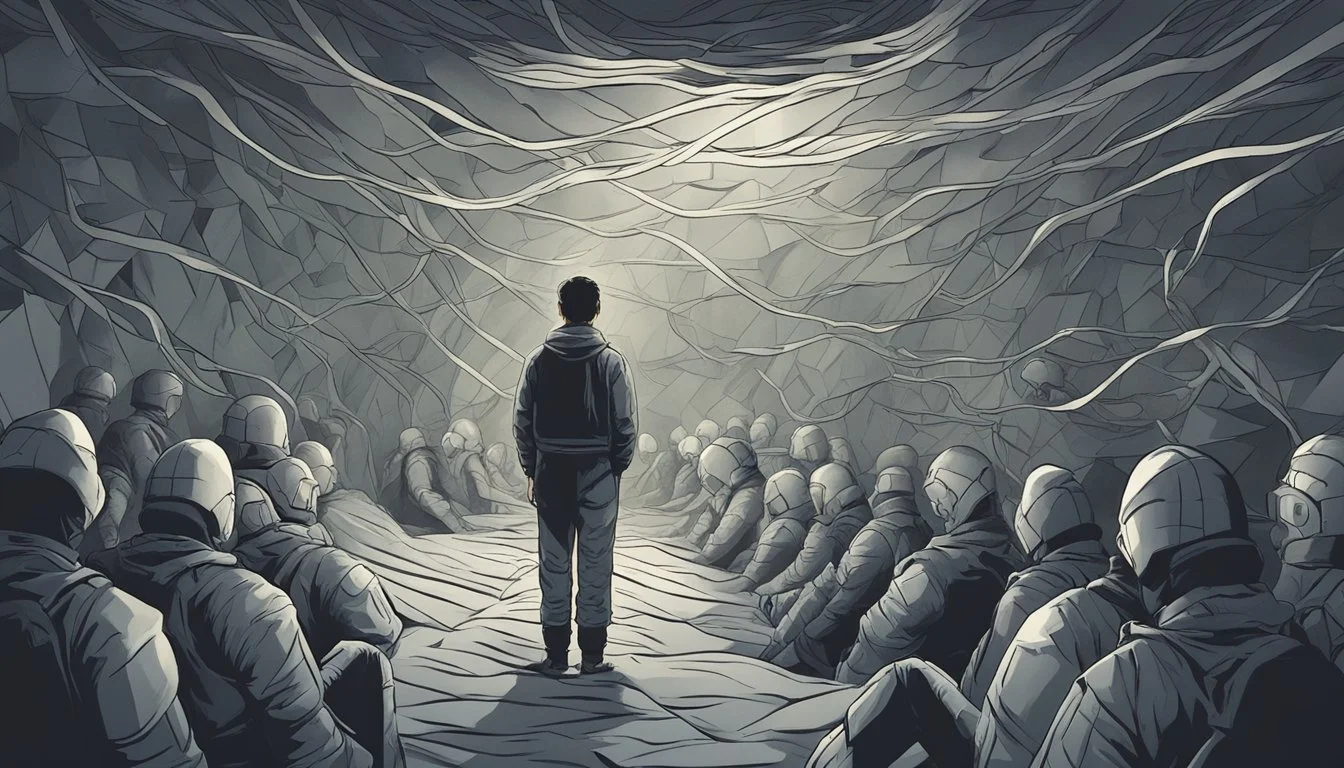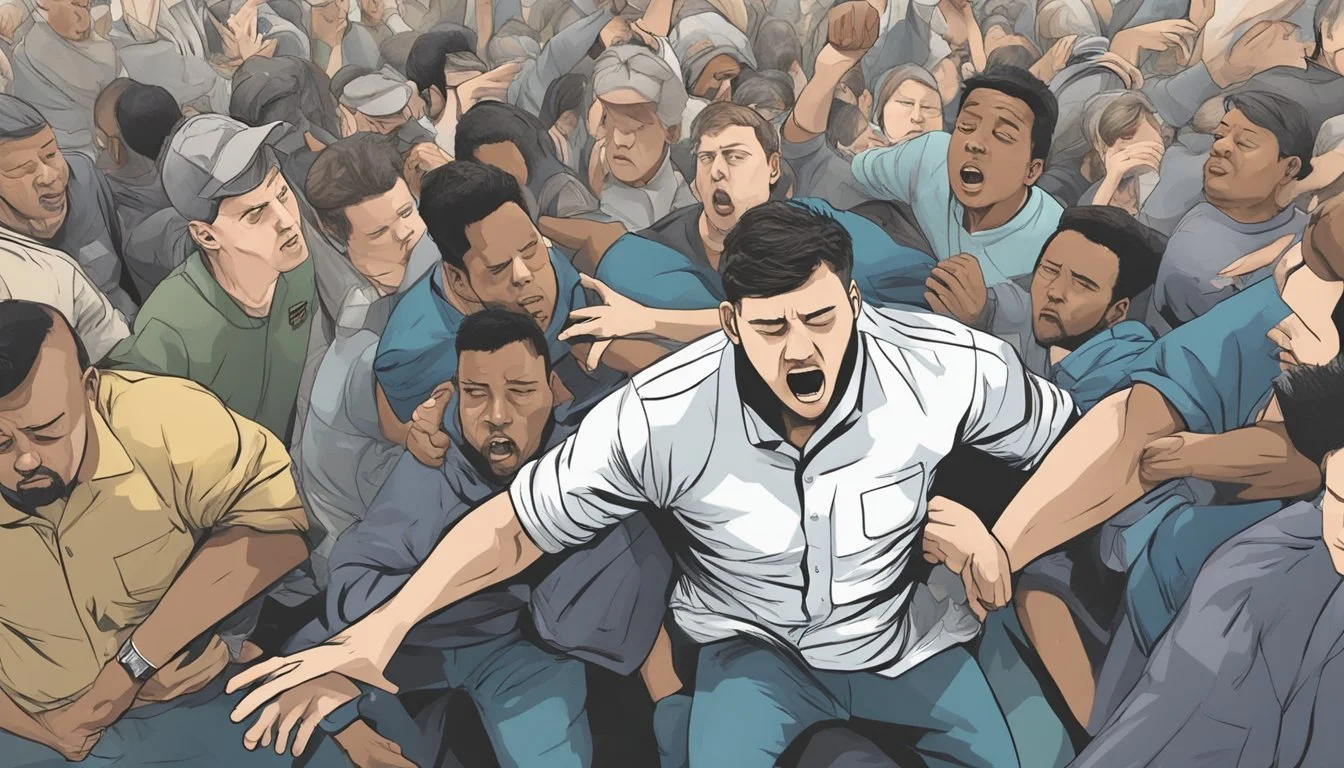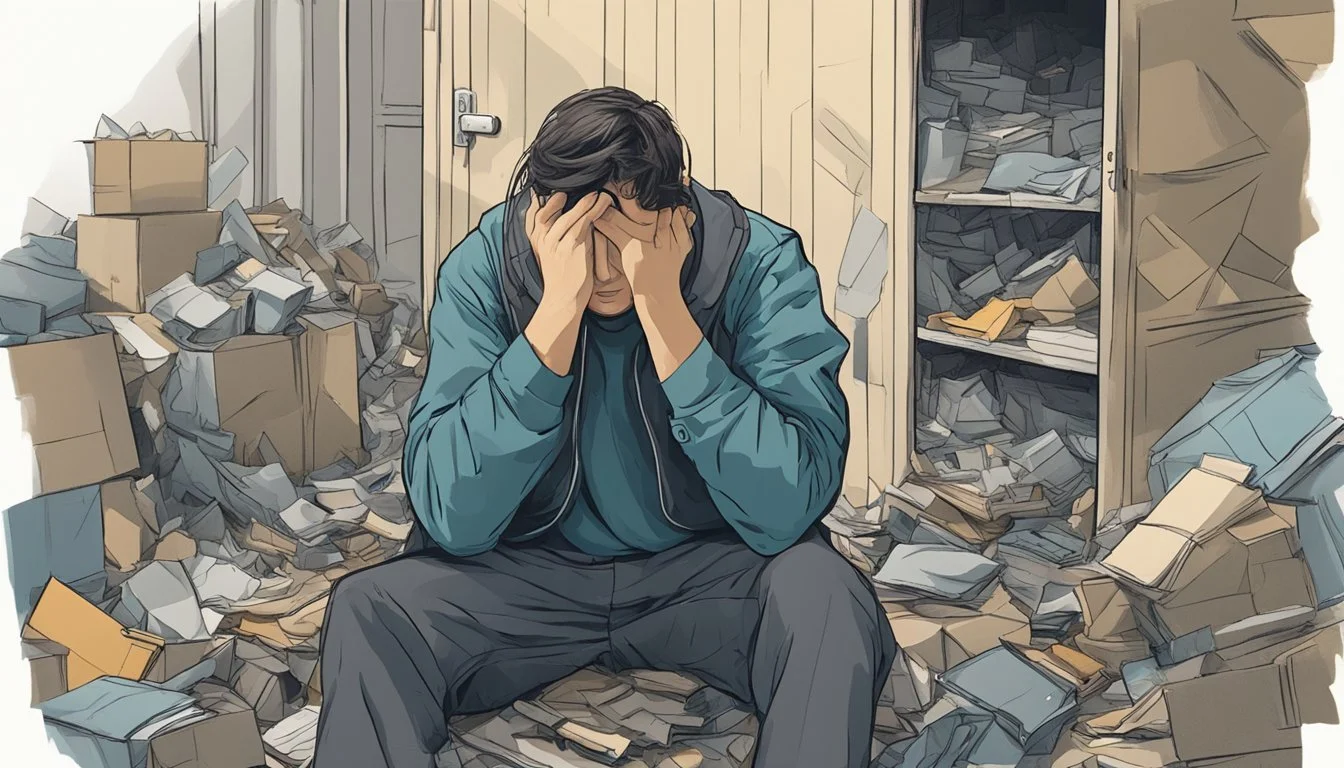Avoiding Harmful Actions When Supporting PTSD Sufferers
PTSD can profoundly impact a person's life, making them vulnerable to certain triggers and behaviors. Understanding what not to do is crucial for supporting those with this condition.
The worst thing to do to someone with PTSD is to disregard their personal boundaries or force them to confront their trauma unprepared. This can include startling them with sudden loud noises or movements, invading their personal space without permission, or pressuring them to discuss traumatic experiences before they're ready. Such actions can trigger intense fear responses or flashbacks, potentially worsening their symptoms.
Dismissing or minimizing a person's PTSD experiences is also harmful. Telling someone to "get over it" or implying their reactions are an overreaction invalidates their struggles and may discourage them from seeking help. Instead, offering patience, understanding, and respecting their need for safety and control in their environment can greatly assist in their healing process.
Understanding PTSD
Post-traumatic stress disorder (PTSD) is a complex mental health condition that can develop after experiencing or witnessing traumatic events. It affects millions of people worldwide and can have profound impacts on daily life.
Defining PTSD
PTSD is a psychiatric disorder that occurs in people who have experienced or witnessed a traumatic event. These events can include natural disasters, serious accidents, terrorist acts, war/combat, or personal assaults. PTSD can affect anyone, regardless of age, gender, or background.
The condition is characterized by intrusive thoughts, avoidance behaviors, and heightened reactivity. People with PTSD often relive the traumatic event through flashbacks or nightmares. They may feel intense distress when reminded of the trauma.
PTSD is not a sign of weakness. It's a normal response to abnormal circumstances that overwhelm a person's ability to cope.
Common Symptoms
PTSD symptoms typically fall into four categories:
Intrusive thoughts
Avoidance
Negative changes in mood and thinking
Changes in physical and emotional reactions
Intrusive thoughts include unwanted memories, nightmares, and flashbacks. Avoidance involves steering clear of places, people, or activities that remind one of the trauma.
Negative changes in mood may include:
Feelings of hopelessness
Memory problems
Difficulty maintaining close relationships
Feeling detached from family and friends
Changes in physical and emotional reactions can manifest as:
Being easily startled or frightened
Always being on guard for danger
Self-destructive behavior
Trouble sleeping or concentrating
Potential Causes
PTSD is triggered by experiencing or witnessing traumatic events. These can include:
Combat exposure
Childhood physical or sexual abuse
Sexual violence
Physical assault
Serious accidents or injuries
Natural disasters
Terrorist attacks
Not everyone who experiences trauma develops PTSD. Factors that may increase the risk include the intensity and duration of the trauma, previous traumatic experiences, and lack of social support.
Biological factors, such as inherited mental health risks and brain chemical regulation, can also play a role in PTSD development. Stress hormones and neurotransmitters appear to be different in people with PTSD compared to those without the condition.
Impact on Individuals
Inappropriate responses to someone with PTSD can have profound effects on their wellbeing. These impacts manifest emotionally, physically, and socially, often exacerbating the challenges individuals already face in managing their condition.
Emotional Turmoil
Insensitive comments or actions can trigger intense emotional responses in those with PTSD. Dismissive statements like "just get over it" may lead to feelings of shame, inadequacy, and self-doubt. Forcing discussions about traumatic events can cause anxiety spikes and potentially lead to panic attacks.
Invalidating their experiences may deepen depression and hopelessness. Individuals may feel misunderstood and isolated, further damaging their self-esteem and ability to cope.
Physical Reactions
PTSD can manifest in physical symptoms, which may intensify when triggered by inappropriate behavior. Startling someone with PTSD can lead to:
Rapid heartbeat
Sweating
Trembling
Difficulty breathing
Invading personal space or making sudden movements may cause hypervigilance and muscle tension. These physical reactions can be exhausting and painful, potentially leading to chronic health issues if repeatedly triggered.
Societal Effects
Mishandling interactions with PTSD sufferers can have broader societal impacts. It may reinforce stigma around mental health conditions, discouraging individuals from seeking help. This can lead to:
Increased isolation
Difficulty maintaining relationships
Challenges in work environments
When society fails to understand and accommodate those with PTSD, it can hinder their recovery and integration. This may result in lost productivity, strained healthcare systems, and a cycle of misunderstanding that perpetuates the condition's negative impacts.
Avoidance and Escalation
Avoidance behaviors and untreated PTSD can lead to escalating issues for those affected. These patterns often worsen symptoms and create additional challenges.
Behavior of Avoidance
People with PTSD may avoid situations, people, or places that remind them of their trauma. They might isolate themselves from friends and family. Some turn to substance abuse as a coping mechanism.
This avoidance can manifest in different ways:
Refusing to talk about the traumatic event
Skipping activities they once enjoyed
Avoiding crowded places or social gatherings
Using alcohol or drugs to numb emotions
While these behaviors may provide temporary relief, they often exacerbate PTSD symptoms in the long run.
Consequence of Untreated PTSD
When PTSD goes untreated, symptoms typically worsen over time. The person may experience:
Increased anxiety and hypervigilance
Difficulty maintaining relationships
Problems at work or school
Worsening depression
Untreated PTSD can lead to secondary issues:
Chronic pain
Sleep disorders
Substance addiction
These compounding problems often create a cycle of distress and frustration. The individual may feel stuck, unable to move forward in their recovery. Seeking professional help is crucial to break this cycle and begin healing.
Recognizing Harmful Actions
Supporting someone with PTSD requires sensitivity and understanding. Certain actions and behaviors can impede recovery or worsen symptoms. Recognizing these harmful approaches is crucial for providing effective support.
Actions to Avoid
Dismissing or downplaying the person's experience is highly detrimental. Phrases like "just get over it" or "it wasn't that bad" invalidate their feelings and can hinder healing. Pushing someone to talk about their trauma before they're ready is equally harmful. This can trigger flashbacks or intensify intrusive memories.
Avoiding the topic entirely or acting like nothing happened is also problematic. This approach may leave the person feeling isolated and misunderstood. Comparing their experiences to others or suggesting they should be "over it by now" disregards the individual nature of PTSD recovery.
Making sudden loud noises or unexpected physical contact can startle someone with PTSD. These actions may trigger a fight-or-flight response, causing distress and anxiety.
Understanding Triggers
Triggers are stimuli that remind the person of their traumatic experience. These can be sights, sounds, smells, or situations that evoke memories of the trauma. Common triggers include:
Loud noises (e.g., fireworks, car backfires)
Crowded places
Certain smells or tastes
Specific dates or anniversaries
News reports or movies about similar events
It's essential to be aware of potential triggers and avoid exposing the person unnecessarily. If exposure is unavoidable, provide advance warning and support. Recognize that triggers can change over time, and new ones may emerge during the recovery process.
Understanding triggers helps create a safe environment for healing. It allows for better planning of activities and conversations, reducing the risk of setbacks or unexpected reactions.
Appropriate Support Strategies
Supporting someone with PTSD requires a thoughtful approach focused on creating a safe environment, communicating effectively, and building a strong support network. These strategies can help foster healing and recovery.
Creating a Supportive Environment
A safe and stable environment is crucial for individuals with PTSD. Minimize potential triggers by reducing loud noises and sudden movements. Establish consistent routines to provide a sense of predictability. Ensure the living space is clean, organized, and calming.
Create designated quiet areas where the person can retreat when feeling overwhelmed. Incorporate soothing elements like soft lighting, comfortable seating, and calming scents.
Respect personal boundaries and allow control over their surroundings. Ask permission before making changes to shared spaces. Offer choices whenever possible to promote a sense of autonomy and safety.
Communicating Effectively
Clear, empathetic communication is essential. Practice active listening without judgment. Avoid interrupting or offering unsolicited advice. Instead, validate their feelings and experiences.
Use "I" statements to express concerns without sounding accusatory. For example, say "I'm worried about you" rather than "You're not taking care of yourself."
Be patient and allow time for processing information. Avoid pressuring for immediate responses. Respect silences and let them lead conversations about their trauma.
Ask open-ended questions to encourage sharing. Offer reassurance and support without minimizing their experiences. Avoid phrases like "It could be worse" or "Just get over it."
Support System and Community
Building a strong support network is vital for PTSD recovery. Encourage connections with trusted friends and family members. Help identify supportive individuals who can offer understanding and patience.
Assist in finding local support groups or online communities for people with PTSD. These provide opportunities to connect with others who have similar experiences.
Encourage participation in activities that promote social interaction and a sense of belonging. This might include volunteer work, hobby groups, or religious communities.
Support involvement in trauma-informed therapy or counseling. Offer to help research treatment options or accompany them to appointments if desired.
Foster relationships with mental health professionals and crisis support services. Keep emergency contact information readily available.
Treatment and Management
Effective treatment and management of PTSD involves a combination of professional interventions and self-care strategies. Seeking help early is crucial for recovery.
Professional Treatments Available
Cognitive Behavioral Therapy (CBT) is a widely used and effective treatment for PTSD. It helps patients identify and change negative thought patterns. Exposure therapy, a type of CBT, gradually exposes individuals to trauma-related memories in a safe environment.
Eye Movement Desensitization and Reprocessing (EMDR) is another evidence-based treatment. It uses eye movements to help process traumatic memories.
Medications, such as selective serotonin reuptake inhibitors (SSRIs), can help manage symptoms. A psychiatrist can prescribe and monitor these medications.
Group therapy provides support and allows individuals to connect with others who have similar experiences.
Self-Care Strategies
Regular exercise can help reduce stress and improve mood. Activities like yoga or tai chi combine physical movement with mindfulness.
Practicing relaxation techniques, such as deep breathing or progressive muscle relaxation, can help manage anxiety.
Maintaining a consistent sleep schedule is important for managing PTSD symptoms. Creating a bedtime routine can improve sleep quality.
Avoiding alcohol and drugs is crucial, as substance use can worsen PTSD symptoms and interfere with treatment.
Journaling can be a helpful way to process thoughts and emotions related to trauma.
Seeking Help
Reaching out to a mental health professional is a crucial step in managing PTSD. A therapist or psychologist can provide a proper diagnosis and develop a tailored treatment plan.
Primary care doctors can offer referrals to specialists and provide initial support. They may also help manage physical symptoms associated with PTSD.
Support groups, both in-person and online, can provide valuable connections and resources. These groups offer a safe space to share experiences and coping strategies.
Crisis hotlines are available for immediate support during difficult times. These services are confidential and often available 24/7.
Preventing Further Trauma
Preventing further trauma for individuals with PTSD involves implementing specific strategies and fostering resilience. These approaches aim to create a supportive environment and equip individuals with effective coping mechanisms.
Preventive Measures
Establish a safe and predictable environment for the person with PTSD. Remove potential triggers from their surroundings when possible. Encourage them to maintain a consistent daily routine to promote a sense of stability.
Educate family members and friends about PTSD to foster understanding and support. Teach them appropriate ways to interact with the individual and avoid inadvertently causing distress.
Implement stress reduction techniques such as deep breathing exercises, progressive muscle relaxation, and guided imagery. These methods can help manage anxiety and prevent overwhelming emotions.
Encourage regular physical exercise, as it can reduce stress and improve overall well-being. Activities like walking, swimming, or yoga can be particularly beneficial.
Promoting Resilience
Build a strong support network for the individual with PTSD. Encourage them to connect with trusted friends, family members, or support groups who can provide emotional support.
Teach mindfulness practices to help the person stay grounded in the present moment. This can reduce rumination on past traumatic events and alleviate anxiety about the future.
Develop healthy coping strategies tailored to the individual's needs. This may include journaling, art therapy, or engaging in hobbies that bring joy and relaxation.
Encourage professional help when needed. Regular therapy sessions can provide valuable tools for managing symptoms and promoting long-term recovery.
Foster a sense of empowerment by encouraging the person to make decisions and set achievable goals. This can help rebuild confidence and a sense of control over their life.
Special Considerations
PTSD manifests differently across populations and traumatic experiences. Certain groups face unique challenges in coping with and seeking treatment for this condition.
PTSD in Different Populations
Veterans and military personnel experience high rates of PTSD due to combat exposure. They may struggle with reintegration into civilian life and face stigma around mental health treatment. Women are more likely to develop PTSD after sexual assault or domestic violence.
Children and adolescents can develop PTSD from abuse, neglect, or witnessing violence. Their symptoms often differ from adults and may include regression in developmental milestones. Older adults with PTSD may have delayed onset of symptoms or confuse them with other age-related issues.
Unique Traumatic Experiences
Natural disasters like hurricanes or earthquakes can trigger PTSD in survivors who lost homes or loved ones. Symptoms may resurface during anniversary dates or similar weather events. Terrorism and mass shootings create widespread fear and hypervigilance in affected communities.
Unexpected deaths, especially violent ones, can lead to complicated grief and PTSD. First responders and medical professionals face repeated exposure to traumatic events, increasing their risk. Refugees and victims of torture often struggle with complex PTSD from prolonged, repeated trauma.







